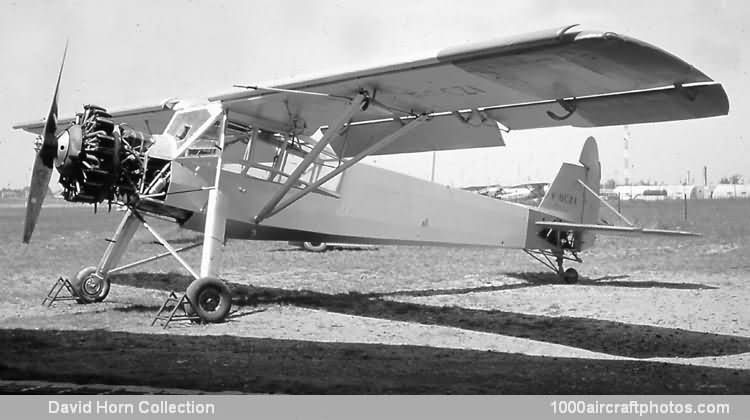06/30/2011. Remarks by Johan Visschedijk: "The Fieseler Storch (Stork) may be said to have introduced true STOL flying. From its first flight in 1936 the remarkable handling characteristics and performance of the aircraft were apparent, especially its unique short take off and landing capabilities were demonstrated. The remarkable machine with its greenhouse cabin and insect-like landing gear gave sterling service to the Luftwaffe throughout WW II on all fronts and was used in many daring operations.
The cessation of hostilities did not see the sudden eclipse of the Fieseler Storch. Quite the contrary. Masquerading under new designations, Storche continued to flow from the formerly German-controlled factories in liberated Czechoslovakia and France. At Puteaux, France, Morane-Saulnier designated the original 240 hp Argus-engined Fi 156 C design as the Morane-Saulnier M.S.500. It was named Criquet (Locust), as were all the subsequent versions.
When supplies of Argus engines ran short the airframe was tailored to take a 233 hp Renault 6Q six-cylinder in-line engine, this resulted in the M.S.501. Air-cooled radial-engined variants followed, the 230 hp nine-clinder Salmson 9ABb powered the M.S.502, the 304 hp seven-cylinder Jacobs R-755-A2 powered the M.S.504. The M.S.505 variant was a conversion carried out by Reims Aviation during 1964-1965 in which the M.S.502's Salmson 9ABb engine was replaced by a Jacobs R-755-A2 engine.
The last version was the M.S.506, an M.S.505 conversion in which the Jacobs R-755-A2 was replaced by a 235 Lycoming O-540 horizontally-opposed six-cylinder engine."
